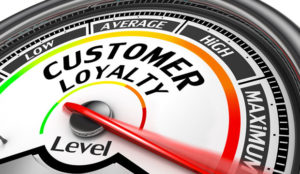Consumers are flexing their shopping muscle by pressuring digital merchants to take more seriously how they respond to customer experience satisfaction complaints.
One of the biggest weapons consumers now wield is at their fingertips. They are expressing their displeasure with abandoned shopping carts and shopping where they find better alternative CX solutions.
A pair of recent studies highlight changing shopper attitudes as the pandemic continues its stranglehold on the supply chain for most industries. Two clear-cut consumer trends have surfaced: online shoppers want more self-service options and an overall more-efficient shopping experience.
A key finding in a Frost & Sullivan survey commissioned in July by knowledge orchestration platform provider Zoomin reveals that four out of five customers believe they could resolve support queries themselves if properly equipped.
Another survey conducted in May by CRM platform company Kustomer underscored the need for continued investment in customer service and the importance of delivering consistent, omnichannel service throughout the customer journey.
“The Zoomin survey found unequivocally that enterprises must provide more intuitive and effective self-service solutions, given the significant implications on customer experience, brand perception, and even sales,” Zoomin CEO and co-founder, Gal Oron told CRM Buyer.
Some 81 percent of users prefer to solve product problems on their own, he continued. However, enterprises usually fall short in enabling them to do so, as 46 percent of users found that searching for answers in technical documentation is a painful experience.
“This could have real business impact, as 84 percent of users surveyed stated that poor content experiences could lead them to switch brands,” he cautioned.
Customer Expectations Changing
Kustomer released a report on the shifting expectations of retail customer service titled “Changing Consumer Expectations for Retail Customer Service.”
That study — based on more than 500 consumers surveyed in the U.S. — found that 90 percent of consumers would not shop with a retailer again if they provided bad customer service and 93 percent of consumers think retail customer service should be more convenient. That response rose from 78 percent in 2019.
Both sets of research results are similar to other industry reports citing consumer pushback on merchants who do not have their customer service act together in the post-Covid environment.
Even more telling is the potential impact from shoppers under the age of 25 in the Kustomer study. Seventy-seven percent of those respondents — compared to an average of 46 percent of consumers in other age categories — said they would be willing to spend more money for good customer service when making purchases.
A large majority of Gen Z respondents think chatbots are helpful. They also prefer customer service emails and texts, while consumers ages 35 and above prefer phone and email.
“The stakes for retail customer service are becoming higher as the massive shift to online shopping and resulting increase in customer service inquiries has permanently changed the role of customer service from transactional to consultative,” said Brad Birnbaum, co-founder and CEO of Kustomer.
Need To Raise the CX Bar
This heightened bar of CX expectations reveals that customer experience is the pillar upon which brand building, recognition, and customer loyalty all depend. Today’s consumers see customer service as an extension of brand identity and expect both digital and in-store retailers to provide proactive, consistent, and seamless service across every available platform at every point along the buyer’s journey, Birnbaum noted.
“There is no longer room for error when it comes to customer service, requiring retailers to deliver a true omni-experience to build meaningful and long-term customer relationships,” he said.
Perhaps even worse for retailers, 27 percent of consumers reported either posting on social media after a bad experience with a retailer and/or posting an online review. The same percentage revealed a demand for better customer service, adding they would recommend a retailer to a friend after a good customer service experience.
Effective Omni-Experience
Zoomin’s tools enable customers to self-serve. It helps retailers to offer a more personalized customer experience by transforming an enterprise’s heavy trove of technical product content into an intuitive and tailored interface that enables customers to self-serve.
It does so by consolidating and personalizing product content — like community forums, help pages, and technical manuals and guides — for each user, anticipating their needs and offering them “premium, Netflix-like service.
Another piece of the better CX puzzle is an effective an omni-experience. Eighty-two percent of consumers report that they expect to be treated the same by online and in-store retail customer service, and 87 percent of consumers get frustrated when they cannot contact retail customer service on their preferred channel.
As a knowledge orchestration company, Zoomin’s platform empowers users to effectively master B2B products. It provides them with relevant technical product knowledge at every channel, tailored to every stage of their customer journey, according to CEO Oron.
Pushing Knowledge Limits
Enterprises typically have hundreds of thousands of pages of technical content, such as product manuals and guides, training materials, knowledge articles, and community discussions.
Unfortunately for the enterprise’s customers, this content is created and managed by many different enterprise teams, tools, and systems. That results in a fragmented, frustrating, and inconsistent experience for the user trying to get answers to questions, observed Oron.
“Zoomin takes that content and delivers it in a unified, intuitive, and personalized way, wherever end users look for it across documentation sites, customer service portals, communities, product sites, and more,” he insisted.
In essence, Zoomin’s platform automatically ingests, synthesizes, and indexes content from any source and then delivers it as a personalized experience to users.
“This allows users to consume any helpful piece of information from any source in any digital location within a unified experience. Unified product content ensures that all that content is up-to-date, relevant, and accessible anywhere customers are looking for it. This holds true whether customers look for it in a documentation site, customer service portal, or community forum,” said Oron.
Ultimately this empowers users. They can access the information they need within an omnichannel experience. All this happens while simultaneously providing comprehensive analytics and actionable insights about what content is working and where content needs improvement in terms of accessibility, clarity, and searchability.
“This all contributes to the goal of improving production adoption, customer experience, and success,” he noted. “Our technology answers two very clear expectations from the customers: the ability to self-service and smooth product adoption.”
Digging Deeper
CRM Buyer pushed Zoomin’s founder and CEO to discuss in more detail key factors impacting CRM issues and how to better serve B2B customers.
CRM Buyer: What is driving the consumer movement to self-serving solutions?
Gal Ormon: In-person interactions play a smaller role now. Remote self-service capabilities are a must-have feature. B2B customers have a stronger belief that they can solve problems on their own.
The pandemic alone is not responsible for the DIY revolution. A generational shift had already been laying the groundwork for the growth of this practice for some time.
The millennial generation came of age with the internet, and the rise of sites like YouTube quickly led to the burgeoning popularity of online tutorials. The “democratization of the tutorial” has given millennials a chance to find self-empowerment through autonomous adult learning.
The pandemic did, however, turbocharge this shift and a desire to self-serve has become mission critical. Those using B2B software expect to be able to navigate a product and seamlessly resolve issues — should they arise — without the need to wait to speak to a customer service representative.
How are businesses responding to this growing trend?
Ormon: Successful businesses tend to listen to their customers. Since enterprise B2B customers are clearly demanding the ability to self-serve, businesses have begun to invest in B2B SaaS solutions and harness the latest technology that will empower customers and enable that self-service.
Businesses are recognizing that once a customer has contacted customer service, they have already failed to deliver the standard of experience today’s customers expect. They know that there is a significant issue in their current processes that need to be addressed. Customers are saying loud and clear that they want an intuitive seamless experience.
What do you see as the most significant finding in the Frost & Sullivan survey results?
Ormon: One of the most eye-catching observations we gleaned from the survey results is that product content and self-service are so intertwined with a product’s branding and overall user experience that it plays an important role in the sales cycle.
An astounding 99 percent of users involved in purchasing say that a vendor’s technical content is a primary or secondary criterion in the decision to purchase.




























































Social Media
See all Social Media